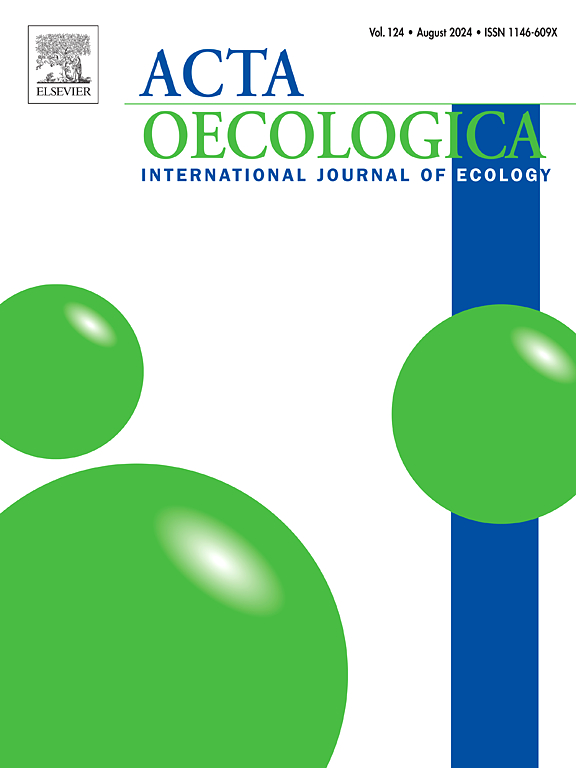Spatial variability in early reproductive characteristics of Ulex europaeus L. (Fabaceae) invading in the high-mountain of central Colombia
IF 1.3
4区 环境科学与生态学
Q3 ECOLOGY
Acta Oecologica-International Journal of Ecology
Pub Date : 2025-06-17
DOI:10.1016/j.actao.2025.104098
引用次数: 0
Abstract
The early reproductive traits of invasive plants enhance their colonization to spread in new environments. However, altitude can act as an environmental filter against the invasion process. In this study, we evaluated the reproductive dynamics of the shrub Ulex europaeus along time since introduction and spatial variability in the high-mountain ecosystems of the Central Andes of Colombia. Four sites were selected, ranging from 2710 to 3636 m above sea level (a.s.l), with introduction periods varying between 18 and 40 years. At each site, we quantified the proportion of reproductive individuals, fruit set, seed set, seed rain, germination and number of seedlings. Significant differences were found in the proportion of reproductive individuals, seed rain, and number of seedlings. Specifically, time since introduction showed that sites with a longer introduction time have a lower proportion of reproductive individuals. Lower altitudes exhibited more favorable climatic conditions for reproduction, however, altitude did not act as an environmental filter for seed germination. In conclusion, U. europaeus demonstrates a strong spatial variability that facilitates its persistence and colonization across the altitudinal gradient in high-mountain ecosystems.
入侵哥伦比亚中部高山地区的豆科叶菖蒲早期生殖特征的空间变异
入侵植物的早期生殖特性增强了它们在新环境中的定植和传播。然而,海拔高度可以作为环境过滤器,防止入侵过程。本文研究了哥伦比亚中部安第斯山脉高山生态系统中灌丛欧洲杉木(Ulex europaeus)自引进以来的繁殖动态及其空间变异。选择了四个地点,海拔高度在2710至3636米之间(a.s.l),引入期在18至40年之间。在每个站点,我们量化了繁殖个体比例、坐果率、坐果率、种子雨、发芽率和幼苗数。在繁殖个体比例、种子雨量和幼苗数量上存在显著差异。具体地说,自引种以来的时间表明,引种时间越长的地点生殖个体比例越低。低海拔地区表现出更有利的繁殖气候条件,但海拔对种子萌发没有环境过滤作用。综上所述,木犀草具有很强的空间变异性,这有利于其在高山生态系统中跨越海拔梯度的持久性和定植性。
本文章由计算机程序翻译,如有差异,请以英文原文为准。
求助全文
约1分钟内获得全文
求助全文
来源期刊
CiteScore
3.60
自引率
0.00%
发文量
57
审稿时长
>0 weeks
期刊介绍:
Acta Oecologica is venue for the publication of original research articles in ecology. We encourage studies in all areas of ecology, including ecosystem ecology, community ecology, population ecology, conservation ecology and evolutionary ecology. There is no bias with respect to taxon, biome or geographic area. Both theoretical and empirical papers are welcome, but combinations are particularly sought. Priority is given to papers based on explicitly stated hypotheses. Acta Oecologica also accepts review papers.

 求助内容:
求助内容: 应助结果提醒方式:
应助结果提醒方式:


